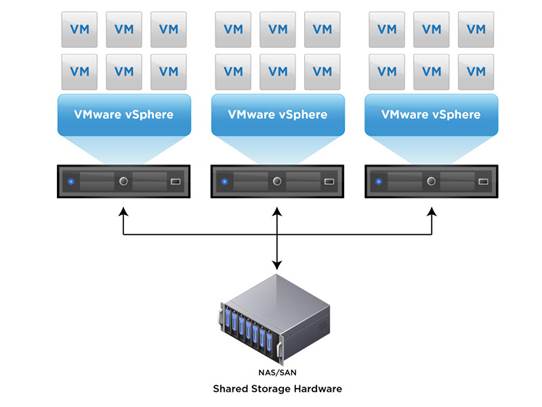Storage is one of the cornerstones to the
infrastructure foundation companies work so hard to build. But enterprises
storage options now stretch far beyond traditionally used hard drives and tape
drives and extend to virtualized environments on shared storage and cloud
services where data is hosted entirely off-site. With so many choices, it can
be difficult to narrow down which types of solutions it certain use cases.
Mark Peters, senior analyst with Enterprise
Strategy Group (www.esg-global.com),
says it all starts with cost because “if all storage was the same price, you’d
put it all on main memory or solid state and be done with it.” But that’s not
how the business world works, and companies have to be concerned with their
budgets and bottom lines.

Enterprises
storage options now stretch far beyond traditionally used hard drives and tape
drives
For that reason, Peters suggests companies
choose storage solutions based on their industry and the types of applications
they use. “One man’s tier-1 application is another man’s tier-3 application,”
he says. Where instant messaging and email may be mission-critical for one
company, it might be of relatively little importance to another. That’s why
it’s worthwhile to look at all available options and compare them on a case by
case basis to determine whether or not they fit your company’s specific needs.
Local storage
Local storage is the most common,
traditional form of enterprise storage. It consists of direct-attached spinning
disks or other media that are only connected to one server or one piece of
infrastructure. According to Peters, many people use local storage “just
be-cause it’s there” and because it “often looks cheaper because it came with
the server.” But he warns that a series of direct-attached solutions can “end
up in islands,” sometimes unable to communicate efficiently or at all. Still,
there are proper uses for local storage, especially if your “application or
server just needs the simplest storage,” says Peters.
Gene Ruth, research director with Gartner (www.gartner.com), says he “typically
discourages folks from using direct-attached storage,” but concurs with Peters
that some use cases do make sense. “One might want to have an exchange email
environment and one could set up a direct-attached disk with dedicated servers to
support exchange,” says Ruth. “One could also set up what amounts to
direct-attached storage for a high transaction rate data-base and they might
set up a Siloed set of physical hardware to support that very specialized
application.”
Shared storage & virtualization
According to Ruth, shared storage is “where
probably 95% of workloads will fit.” In fact, he says that shared storage is
good for file shares, data-base support, server virtualization, and many other
uses. Plus, there are many benefits to moving away from DAS (direct-attached
storage) to a shared or NAS (network-attached storage) model for performance
and consolidation.

Shared
storage is “where probably 95% of workloads will fit”
“If you’ve got DAS attached to each of your
servers, it’s kind of captive to that server,” says Terri McClure, senior
analyst with ESG. “If you have 50% extra capacity on server A and you’re at 90%
on server B, you can’t tap server A’s capacity. It’s just sitting there useless
to server B, and you’ll have to go buy [more capacity]. One way is to use
network storage for better utilization and greater efficiency. So, if you have
a number of servers share a storage array and you have 50% overhead, any of the
servers can get to that.”
Shared storage solutions and virtualization
are very popular in the IT industry and their growth is expected to continue
for the foreseeable future. In fact, according to Chris O’Connor, senior
research analyst with Info-Tech Research Group (www.infotech.com), the efficiency and
performance of virtualized environments have changed the way companies compare
and evaluate storage options. And businesses are virtualizing more data and
applications than ever before. “As consolidation and virtualization efforts
have matured, we’ve seen both increases to the density of virtual machines
supported on physical hardware, as well as the virtualization of more
mission-critical workloads.”
Public cloud storage

Some
companies use the cloud for temporary additional capacity
Cloud storage is beneficial to companies
for many reasons, but to tie it back to local and shared storage, it can be
used to back up of on-premises data storage devices to great effect, according
to Mike Matchett, senior analyst and consultant at the Taneja Group (www.tanejagroup.com). In addition to
backing up your on-premises storage, he adds that it can also be used “directly
as primary storage” for collaboration purposes, like file-sharing.
McClure agrees that backup is a perfect use
for cloud storage, but that due to latency issues, it might not be the best it
for more intense uses such as hosting applications that require fast response
times. She sees the cloud as a great solution for disaster recovery “because
it’s much less expensive to stand up a copy of your data in a cloud in case
something happens than it is to set up a remote data center somewhere.” McClure
points out that some companies use the cloud for temporary additional capacity,
which is typically seen “in retail around the holiday season.”
O’Connor says that although he agrees that
the three biggest benefits of cloud storage are “anywhere access, agility, and
capital savings, many have found that the long-term total cost of storing data
or hosting applications persistently in the cloud is greater than keeping it
in-house.” For that reason, he says, some companies are trying to move their
solutions back on-premises, whether that’s through the NAS or other types of
cloud environments.